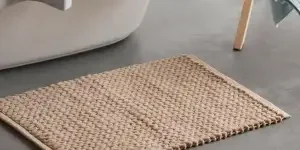In the realm of home décor and functionality, bath mats have transcended their traditional role, becoming pivotal elements of bathroom aesthetics and safety in 2024. As we navigate a market brimming with diverse materials and designs, the selection of a bath mat is no longer a mundane decision but a strategic choice reflecting personal style and practical needs. The right bath mat not only complements the bathroom’s decor but also ensures comfort and safety, making it a subtle yet significant contributor to the daily routine. In this ever-evolving market, understanding the latest trends, materials, and features becomes crucial for making an informed decision. This guide aims to empower readers with the knowledge to select a bath mat that harmonizes functionality with the latest design trends, elevating the everyday experience of their bathroom space.
Table of Contents
1. Market overview
2. Different types and their features
3. Things to consider when selecting products
1. Market overview
The bath mat market in 2024 is a dynamic space, balancing traditional materials with long life cycles and the emerging trend of personalized products catering to modern consumer preferences.
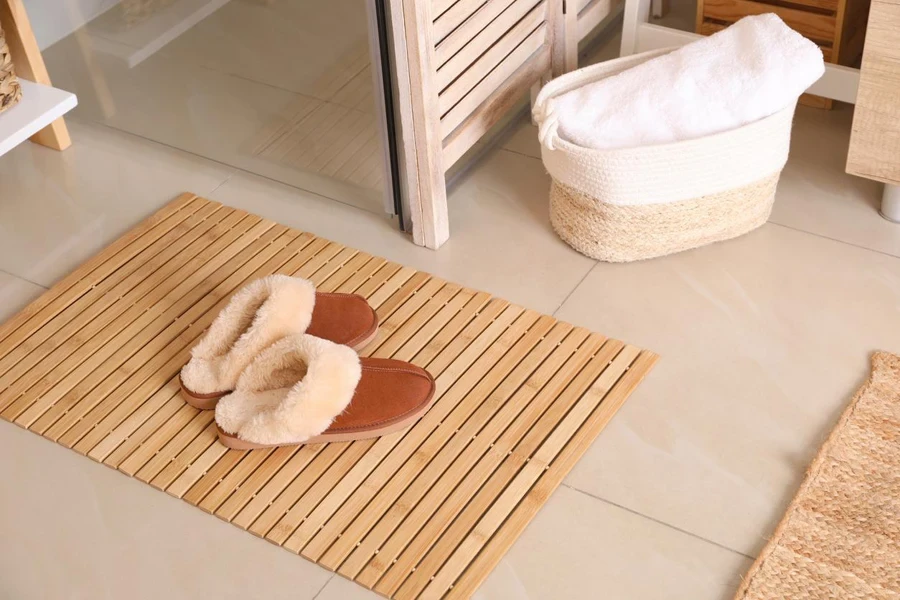
The bath mat market in 2024 is characterized by a blend of steady growth, diverse product offerings, and evolving consumer preferences. According to a comprehensive analysis, the US bath mat market is expected to grow at a Compound Annual Growth Rate (CAGR) of 4.15% from 2023 to 2028, with a market size increase of USD 91.48 million. This growth is driven by the expansion of organized retail sectors, including hypermarkets and supermarkets, which are major offline distribution channels for bath mats.
A notable trend shaping the market is the rising demand for personalized bath mats. Consumers increasingly prefer bath mats that reflect their personal style and living preferences. For example, products like baby bath mats personalized with children’s favorite characters are gaining popularity. This trend of personalization is particularly prominent among Millennials in the US who favor unique designs and custom engravings.
However, the market faces the challenge of a long product replacement cycle, particularly for durable materials like rubber and PVC. These materials typically have a low replacement rate, which affects the frequency of purchases. Despite this, the segment for rubber bath mats is expected to witness significant growth due to their popularity, especially for household applications. Similarly, the PVC segment is also expected to grow, driven by the demand for anti-slip surfaces in bathtubs and shower rooms.
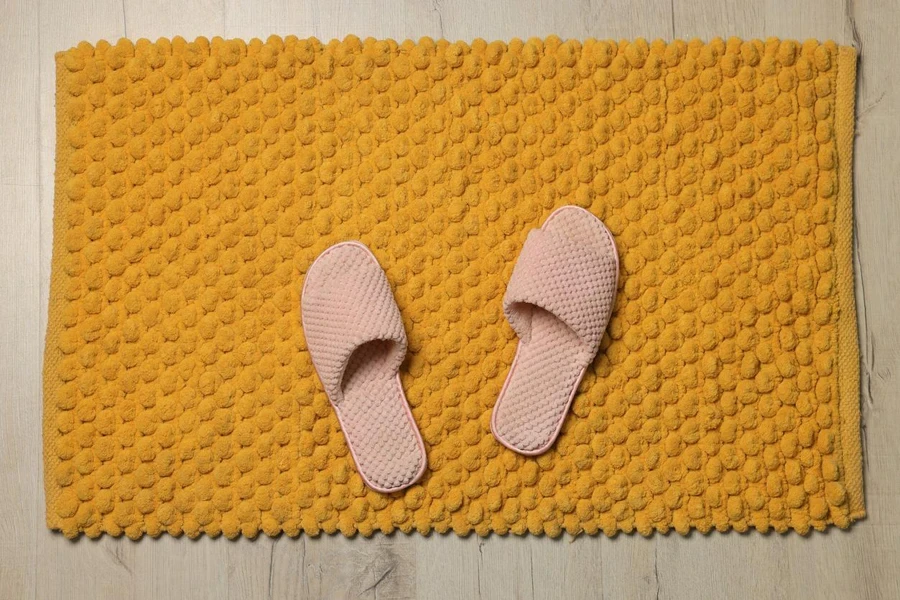
2. Different types and their features
In 2024, the bath mat market presents a diverse array of materials, each offering unique features, benefits, and potential drawbacks. Each type of bath mat material offers a unique set of characteristics catering to different preferences and needs. From the classic comfort of cotton to the eco-friendly appeal of bamboo, and from the plush softness of microfiber to the supportive cushioning of memory foam, consumers have a wide range of options to choose from, each with its own set of advantages and considerations.
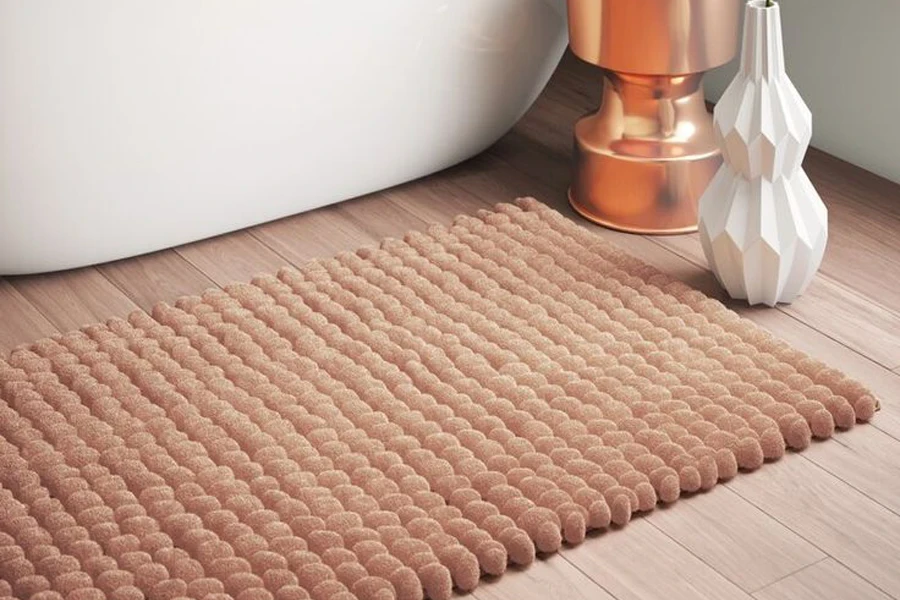
Cotton bath mats:
Cotton bath mats are renowned for their softness and absorbency, making them a classic choice in many households. Cotton’s natural absorbency and low-maintenance care, especially in mats with looped weaves, make it an ideal material for bath linens. One notable downside, however, is their tendency to take longer to dry compared to synthetic alternatives, potentially leading to mildew issues if not properly cared for. Additionally, cotton bath mats may require more frequent washing to maintain hygiene.
Microfiber bath mats:
Microfiber, a synthetic material, is highly praised for its exceptional absorbency and quick-drying properties. According to Apartment Therapy, microfiber bath mats are a great choice for those seeking a mat that dries quickly and feels plush underfoot. Their fine fibers allow for a high density of strands, which results in excellent water absorption and a soft, luxurious feel. However, some microfiber mats can be prone to slipping if they don’t have a proper non-slip backing.
Bamboo bath mats:
Bamboo mats stand out for their sustainability and unique aesthetic. As per Natural Step Bath Mats, bamboo is a highly sustainable material, regenerating quickly after harvest without the need for fertilizers or excessive water. It’s often lauded for its natural antimicrobial properties. However, bamboo mats may not be as absorbent as their fabric counterparts and can be prone to mold if left wet, which requires careful maintenance.
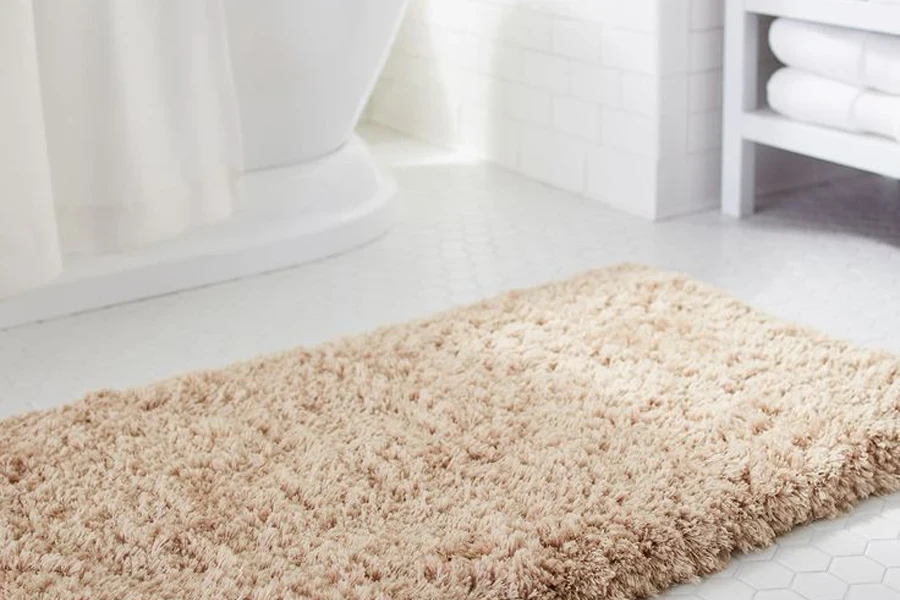
Memory foam bath mats:
Memory foam bath mats are recognized for their cushioning and comfort, providing a soft, supportive surface to step on after a shower. They are particularly suitable for those seeking extra support or comfort underfoot. While memory foam mats offer excellent absorbency and a plush feel, as mentioned in The Spruce, they can retain water and may take longer to dry out completely. Additionally, some memory foam mats can be slippery if placed on wet surfaces and may require non-slip backing for safety.
Innovations in bath mat materials and design:
The year 2024 also sees innovations in eco-friendly and technologically advanced bath mat options. There’s an increasing focus on environmentally sustainable materials, like recycled fabrics and biodegradable options, which appeal to eco-conscious consumers. Technological advancements have led to features like water-resistant coatings and improved non-slip functionalities, enhancing both safety and durability.
3. Things to consider when selecting products
Choosing the right bath mat involves balancing functional aspects like absorbency and slip resistance with aesthetic preferences and special considerations for different users. Whether it’s a plush microfiber mat for a luxurious feel or a durable bamboo mat for an eco-friendly touch, the key lies in understanding the unique requirements of the space and the people using it. Each aspect plays a key role in determining the ideal bath mat for any bathroom.
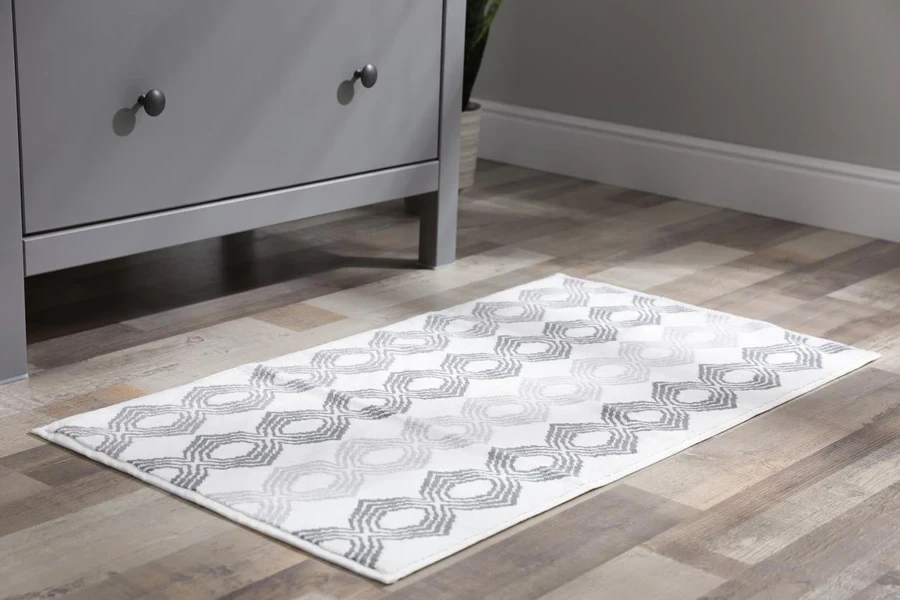
Absorbency:
The primary function of a bath mat is to absorb excess water, thus preventing wet floors that can be hazardous. The absorbency level varies significantly among different materials. As noted, cotton mats excel in absorbency but may take longer to dry. In contrast, microfiber options offer a balance between absorbency and quick drying, making them a practical choice for high-traffic bathrooms.
Slip resistance:
Safety is paramount, especially in areas prone to moisture like bathrooms. Rubber and PVC mats are often preferred for their non-slip qualities. However, mats like bamboo, while aesthetically pleasing, may require additional non-slip backing. For households with young children or individuals with mobility issues, a mat with a strong grip and stability is essential.
Ease of cleaning:
Bath mats need regular cleaning to maintain hygiene and longevity. Memory foam and microfiber mats, for instance, are machine washable but may require air drying to maintain their structure. Cotton mats, being washable and durable, offer ease of maintenance but may need more frequent laundering.

Durability:
The lifespan of a bath mat depends on its material and usage. Bamboo mats, known for their durability, can last longer with proper care. Memory foam mats, while comfortable, may show wear over time, especially if placed in high-moisture areas.
Aesthetic appeal:
A bath mat is not just a functional item but also an element of décor. The choice of color, texture, and pattern should complement the overall bathroom design. As trends evolve, as seen in 2024, personalized and custom-designed mats are becoming popular, allowing for a more tailored aesthetic that matches individual styles and bathroom decors.
Conclusion
In 2024, the selection of a bath mat goes beyond mere functionality; it is a decision that interweaves practicality with style. Crucially, choosing the right bath mat involves considering factors like absorbency, slip resistance, ease of cleaning, durability, and aesthetic appeal, all while aligning with the specific needs of the users, be they families with young children or individuals with mobility challenges. As we move through 2024, it’s essential for consumers to balance their personal preferences with the evolving trends and innovations in the bath mat market. By doing so, they can select a bath mat that not only meets their functional requirements but also enhances the overall appeal of their bathroom space.
